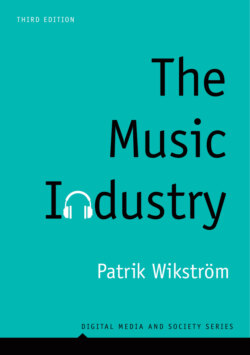Читать книгу The Music Industry - Patrik Wikström - Страница 9
Connectivity vs. control
ОглавлениеThe twentieth-century music economy was essentially about control – a music firm’s top priority was to maximize the revenues from each individual piece of intellectual property and to minimize unauthorized use. In the new music economy, it is more or less impossible to regulate the flow of information and police how fans use intellectual property. I borrow a term from network theory – connectivity – to explain the new situation. Connectivity is a measure of how well the members of a network are connected. A network is considered to have a high level of connectivity if most of its members are connected to each other, and vice versa. In Figure 0.2, the network to the left has lower connectivity than the network to the right. In a network with high connectivity, information, money, fads, norms, etc. easily flow between the members (see, e.g., Watts 2003).
In the twentieth-century music economy, the network constituted by music companies and audiences had a relatively low level of connectivity. Basically, there were strong connections running between the music firms and the audience, but only weak connections between individual members of the audience (illustrated by the left network in Figure 0.2). Consequently, the music firms could control the flow of music with relative ease, since there was nothing to link the different elements that made up the audience.
In the new music economy, the importance of physical music distribution and mass media has been radically reduced, while the importance of Internet media has exploded. These network-based communication technologies have an entirely different structure from the previous hierarchical media. The technologies lower the barriers, which had previously restricted the capability to distribute information to the network, i.e. the capability to upload information to the Cloud. Now, the capability to upload is theoretically accessible to everyone connected to the network. As a consequence, the connectivity of the ‘audience–music firm’ network has increased, which in turn has resulted in the music firms losing their ability to regulate – to control – the flow of information. In a nutshell, the new music industry dynamics is characterized by high connectivity and little control.
Figure 0.2 Increased connectivity causes the music firms to lose their ability to control the flow of information
It is important to note that ‘control’ in this context is to be understood as the music firms’ ability to limit, direct or constrain the flow of information. ‘Loss of control’ should not be understood as losing the ability to monitor, observe or detect the flow of information. Rather, digital information and communication technologies have increased music firms’ ability to monitor and follow fans’ online behaviour, how they use information and communicate with each other.
